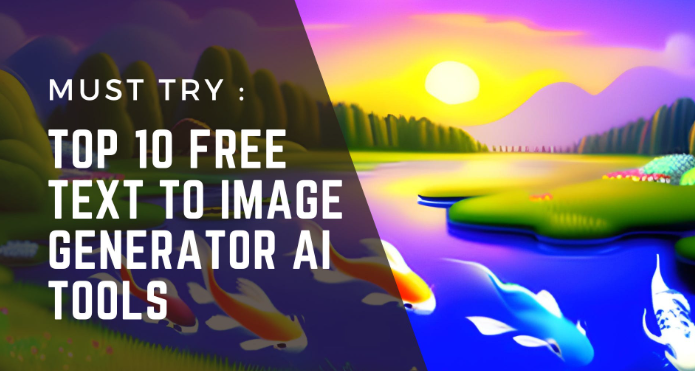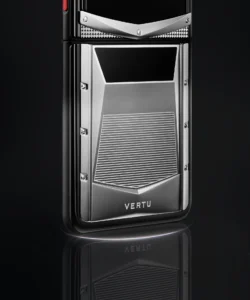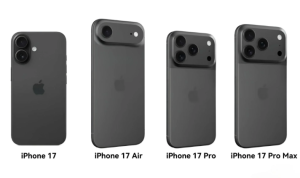Struggling to visualize your ideas quickly and efficiently? Imagine bringing your wildest concepts to life with just a few words.
What You'll Learn:
- The growing importance of AI text-to-image generators for creative workflows.
- A curated list of the top 10 AI text-to-image tools available.
- Key factors to consider when selecting the perfect AI image generator for your needs.
Why AI Text to Image Matters in 2025
The landscape of creative production is undergoing a seismic shift, and AI text-to-image generators are at the forefront of this revolution. For designers, marketers, artists, and content creators, these tools are no longer a novelty but a necessity.
Current Market Trends
The demand for unique and high-quality visual assets is exploding across all industries. From social media campaigns and blog post illustrations to concept art and product mockups, the need for custom imagery is constant. Traditional methods of image creation, such as hiring illustrators or stock photo subscriptions, can be time-consuming and expensive. AI text-to-image generators offer an unprecedented solution by allowing users to generate bespoke visuals from simple text prompts. This democratization of image creation is democratizing creativity itself.
- Increased accessibility: Tools are becoming more user-friendly, requiring no prior technical expertise.
- Rapid prototyping: Designers can quickly iterate on visual concepts, saving significant time and resources.
- Personalized content: Businesses can generate highly specific visuals tailored to their brand and audience.
- New artistic mediums: Artists are exploring AI as a collaborative tool, pushing the boundaries of traditional art forms.
Future Outlook
Looking ahead to 2025 and beyond, the capabilities of AI text-to-image generators are expected to become even more sophisticated. We can anticipate:
- Higher resolution and photorealism: Images will become virtually indistinguishable from real photographs.
- Greater control and customization: Users will have finer control over style, composition, and artistic elements.
- Integration with existing workflows: AI generators will seamlessly integrate into popular design software.
- Ethical considerations and copyright advancements: Discussions around AI-generated art ownership and ethical use will continue to shape the technology.
The future is bright for AI-powered visual creation, promising to empower a new generation of creators.
Top AI Text to Image Options
The market is brimming with powerful AI text-to-image generators, each offering a unique set of features and capabilities. Here's a breakdown of some of the leading options, categorized by their general positioning.
Premium Solutions
These platforms often offer the most advanced features, highest quality outputs, and extensive customization options, making them ideal for professionals who demand the best.
- Midjourney: Renowned for its artistic and often surreal outputs, Midjourney excels at creating visually stunning and imaginative images. It's known for its unique aesthetic and is a favorite among digital artists.
- DALL-E 3 (via ChatGPT Plus/Enterprise): Developed by OpenAI, DALL-E 3 is celebrated for its incredible understanding of complex prompts and its ability to generate coherent and contextually accurate images. Its integration with ChatGPT makes it exceptionally versatile.
- Stable Diffusion XL (SDXL): An open-source powerhouse, SDXL offers remarkable flexibility and control. While it can be run locally for maximum privacy, cloud-based interfaces also make it accessible. It's praised for its photorealism and artistic versatility.
- Adobe Firefly: Integrated directly into Adobe's Creative Cloud suite, Firefly offers generative AI features designed for professional workflows. It's particularly strong in generating commercially safe assets and offers features like text effects and generative fill.
Budget-Friendly Alternatives
For those starting out or with more constrained budgets, these options provide excellent value without compromising too much on quality.
- Leonardo.Ai: This platform offers a generous free tier and boasts a user-friendly interface with a wide array of models and training capabilities. It's a great starting point for exploring AI art.
- Playground AI: Playground AI provides a free tier with impressive features, including image editing and upscaling. It's a solid choice for quick ideation and generating social media visuals.
- Canva AI Image Generator: Integrated into the popular design platform, Canva's AI generator is incredibly easy to use and perfect for users already familiar with Canva's interface. It's ideal for quick social media posts and presentations.
- NightCafe Creator: NightCafe offers a variety of AI art algorithms and a community aspect. It provides a good balance of accessibility and creative options, with a daily free credit system.
- Dream by WOMBO: Known for its simplicity and speed, Dream by WOMBO is a mobile-first option that allows for rapid image generation with various artistic styles.
- Bing Image Creator (powered by DALL-E 3): This free tool from Microsoft leverages the power of DALL-E 3, offering impressive capabilities without a subscription. It's an excellent way to experiment with advanced AI image generation.
Here's a quick comparison of some key features:
| Feature | Midjourney | DALL-E 3 (via ChatGPT) | Stable Diffusion XL (SDXL) | Adobe Firefly | Leonardo.Ai (Free Tier) |
| Ease of Use | Moderate (Discord) | High | Moderate (UI dependent) | High | High |
| Artistic Style | Highly Artistic | Versatile | Highly Versatile | Professional | Versatile |
| Photorealism | Good | Very Good | Excellent | Good | Very Good |
| Prompt Comprehension | Very Good | Excellent | Very Good | Good | Very Good |
| Free Tier | No (Trial limited) | No (Requires ChatGPT+) | Yes (Local/Cloud options) | Limited | Yes |
| Commercial Use | Varies by plan | Varies by plan | Varies by license | Yes | Varies by plan |
How to Choose the Right AI Text to Image
Selecting the ideal AI text-to-image generator depends heavily on your specific needs, technical skills, and budget. Here’s a framework to guide your decision.
Selection Criteria
When evaluating different AI image generators, consider the following:
- Image Quality and Realism: Do you need hyper-realistic images, or are stylized illustrations acceptable?
- Ease of Use: Are you comfortable with complex interfaces and parameters, or do you need a simple, intuitive tool?
- Customization and Control: How much control do you need over the output, such as aspect ratios, styles, and negative prompts?
- Speed of Generation: How quickly do you need images? Some generators are faster than others.
- Cost and Licensing: What is your budget? Are you looking for free options, or are you willing to pay for premium features? What are the licensing terms for commercial use?
- Integration: Does the tool integrate with your existing creative software or workflow?
- Community and Support: Is there an active community for support and inspiration?
“The best AI tool is the one that seamlessly fits into your creative process and helps you achieve your vision faster and more effectively.”
Decision Framework
To make an informed decision, follow these steps:
-
Define Your Primary Use Case:
- For artists: Focus on artistic control, style variety, and high-resolution output (e.g., Midjourney, SDXL).
- For marketers: Prioritize speed, ease of use, and commercially safe content (e.g., Adobe Firefly, Canva AI).
- For beginners: Look for intuitive interfaces and generous free tiers (e.g., Leonardo.Ai, Bing Image Creator).
-
Test Free Tiers and Trials: Before committing to a paid subscription, take advantage of free tiers or trial periods. Experiment with various prompts to see how each tool responds.
-
Compare Outputs: Generate similar prompts across different platforms and compare the results side-by-side. Pay attention to details, coherence, and adherence to your prompt.
-
Consider Your Budget: List your budget and explore the pricing plans of your shortlisted tools. Remember to factor in potential costs for upscaling or premium features.
-
Review Licensing Terms: Crucially, understand the licensing agreements for commercial use. Some AI generators have stricter terms than others.
By systematically evaluating these factors, you can confidently select an AI text-to-image generator that will become an invaluable asset to your creative toolkit.
FAQ (Frequently Asked Questions)
Q: What is an AI text-to-image generator?
A: An AI text-to-image generator is a type of artificial intelligence that creates images based on textual descriptions (prompts) provided by a user. You describe what you want to see, and the AI generates a visual representation of that description.
Q: Do I need to be an artist or designer to use these tools?
A: Absolutely not! While artistic understanding can help in crafting better prompts, these tools are designed to be accessible to everyone. You only need to be able to describe your idea in words.
Q: Can I use AI-generated images for commercial purposes?
A: This varies significantly by platform. Some platforms explicitly allow commercial use with certain plans or by purchasing licenses, while others may have restrictions. It's crucial to always check the specific terms of service and licensing agreements of the AI generator you are using.
Q: How do I write effective prompts for AI image generators?
A: Effective prompts are descriptive and specific. Include details about the subject, style, lighting, colors, composition, and mood. Experiment with different keywords and phrasing. For example, instead of “a dog,” try “a photorealistic golden retriever sitting in a sunlit meadow, with soft bokeh in the background, cinematic lighting.”
Q: What is the difference between Stable Diffusion and Midjourney?
A: Stable Diffusion is an open-source model that offers immense flexibility and can be run locally, providing more control. Midjourney, on the other hand, is known for its highly artistic and often surreal outputs, accessed primarily through Discord, and is managed by a company.








